Dreaming of a winter wonderland escape? With its snow-capped mountains and wide plains, the Treasure State offers a cold season straight out of a storybook. But before you pack your bags, let’s delve into what chilly Montana winter weather is like.
From frigid temperatures that can dip below -50°F (45.6°C) to snowstorms that blanket the state, Big Sky Country’s winter is no joke. The transition from fall to winter can be abrupt, and the state’s varied topography means that temperature extremes can differ dramatically from one region to another.
If you’re planning a trip to Montana’s renowned national parks like Glacier and Yellowstone, a solid grasp of the winter weather patterns is essential. But even if you’re not venturing into the wilderness, knowing how to navigate the state’s icy roads and what to wear can make your winter experience much more enjoyable.
I know the thought of packing up and heading into the freezing wilderness can be a bit daunting but fear not!
- Related article: Climate of Montana
Don’t let the cold weather scare you off – I’m here to help you navigate the frosty terrain with ease and confidence. From snowfall averages to essential winter safety tips, this guide has you covered.
7 Key Takeaways on Montana’s Winter Weather
- Montana winters are a roller coaster, with temperatures ranging from -10°F (23.3°C) to -50°F (45.6°C) and sudden temperature drops.
- The state is a snow lover’s paradise, with an average of 38.1 inches of snow and opportunities for winter sports galore.
- Montana’s winter wind can be intense, with an average speed of over 20 mph and bone-chilling wind chills.
- National parks like Glacier and Yellowstone offer unique winter experiences, but weather conditions can be unpredictable and extreme.
- Essential Montana winter weather tips include investing in winter tires, dressing in layers, and staying informed about road and weather conditions.
- Winter hazards like black ice and avalanches should be taken seriously, especially for those venturing into mountainous areas.
- Despite the challenges, Montana’s winter beauty is unmatched and offers a magical experience for those who are prepared.
Winter Weather in Montana
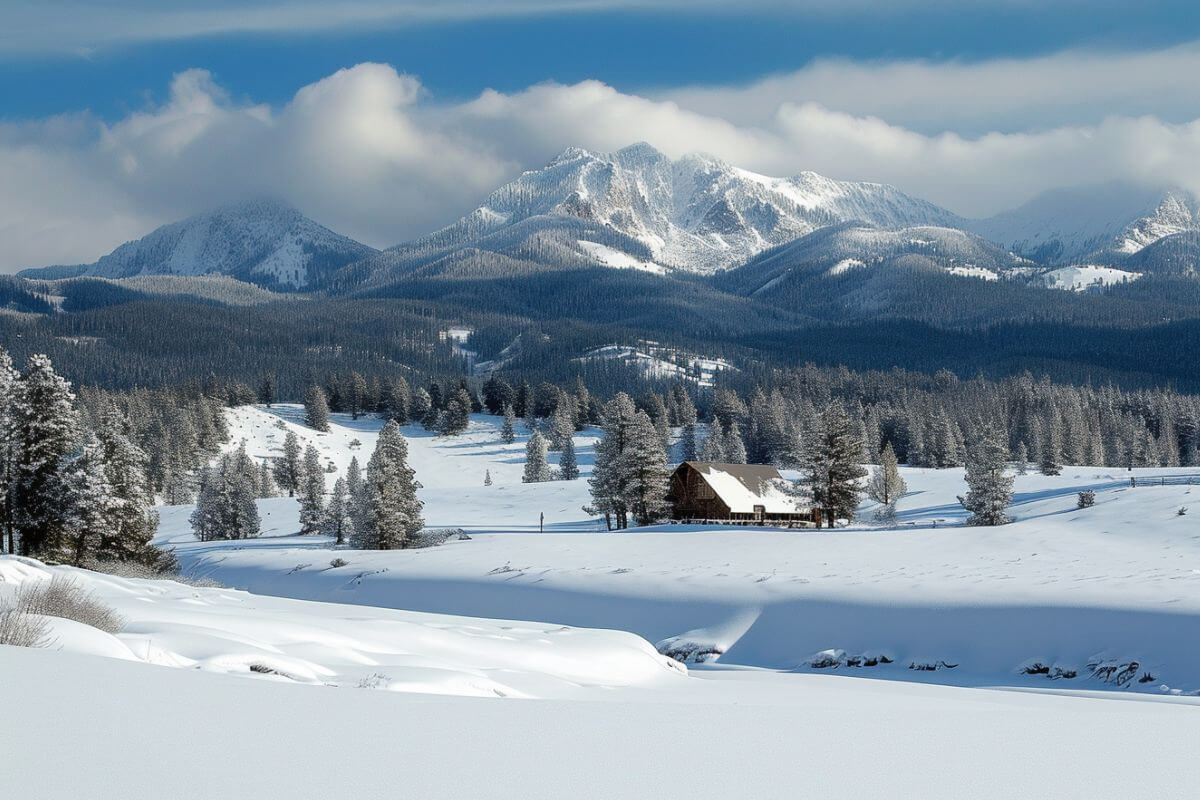
Winter in Montana is a season of contrasts, where snowflakes gently blanket the landscape, and temperatures can plummet. The vast size of the state, combined with its diverse topography, makes for some of the most unpredictable and breathtaking winter conditions in the United States.
This section will give you the lowdown on what to expect during your winter visit, from the average temperatures to the types of winter weather you might encounter.
Montana Winter Temperature
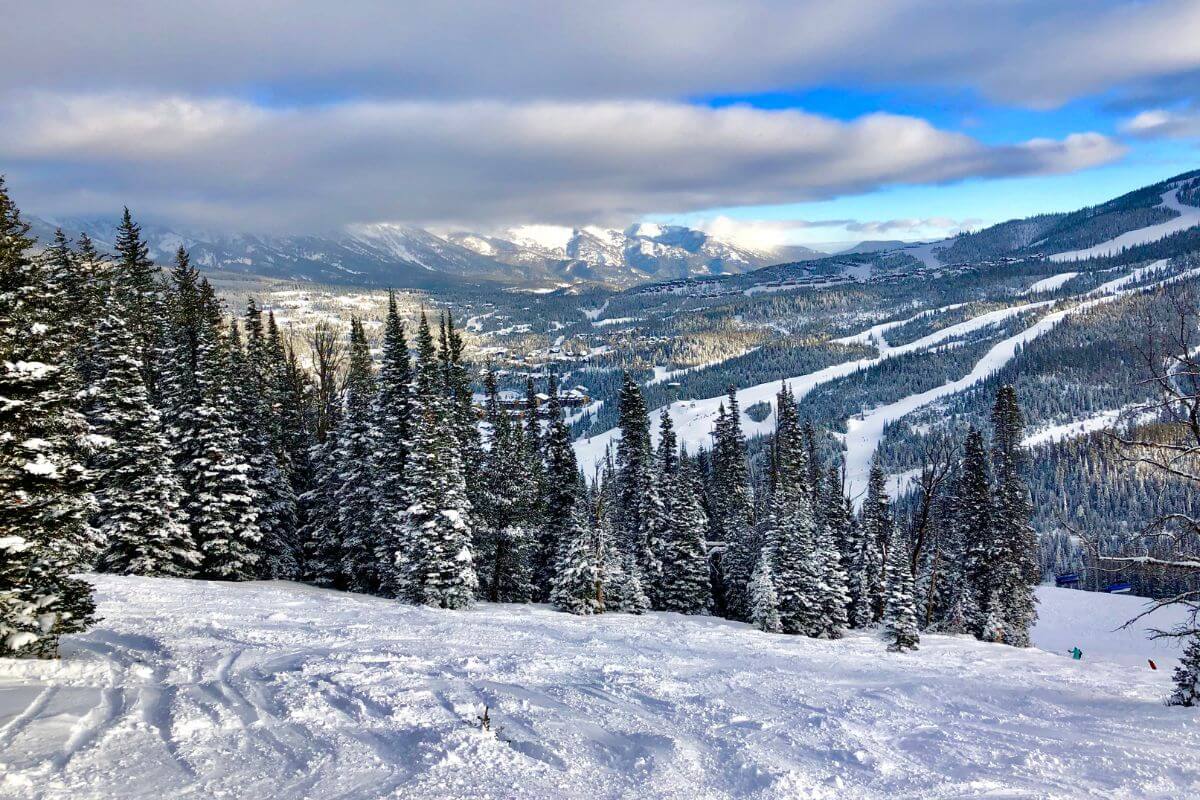
When it comes to winter weather, Montana doesn’t mess around. From November to March, you’re in for a wild ride.
Montana ranks as the 6th coldest state in the U.S., with an average winter temperature of 42.6°F (5.9°C) and a daily high of just 14°F (-10°C). Temperatures can swing from a chilly -10°F (-23°C) to a bone-numbing -50°F (-45.6°C) in some parts.
The western region, home to Missoula and Kalispell, enjoys milder winters compared to the eastern part of the state, where they face bitter colds, often dipping below -30°F (-34.4°C). Places like Billings in the mountainous regions experience even chillier winters compared to the western regions.
Montana’s winter season isn’t for the faint of heart, and the state has a reputation for enduring extreme temperatures and heavy snowfall. Don’t be surprised by sudden temperature drops or record-breaking cold snaps in Montana.
The onset of frigid weather can be unpredictable, swinging from gradual to sudden. As snow and ice envelop highways, avalanche alerts are rampant, and power outages are not uncommon.
On the bright side, you’ll get a decent amount of daylight, with roughly 8 to 10 hours to work with.
Montana Winter Snow
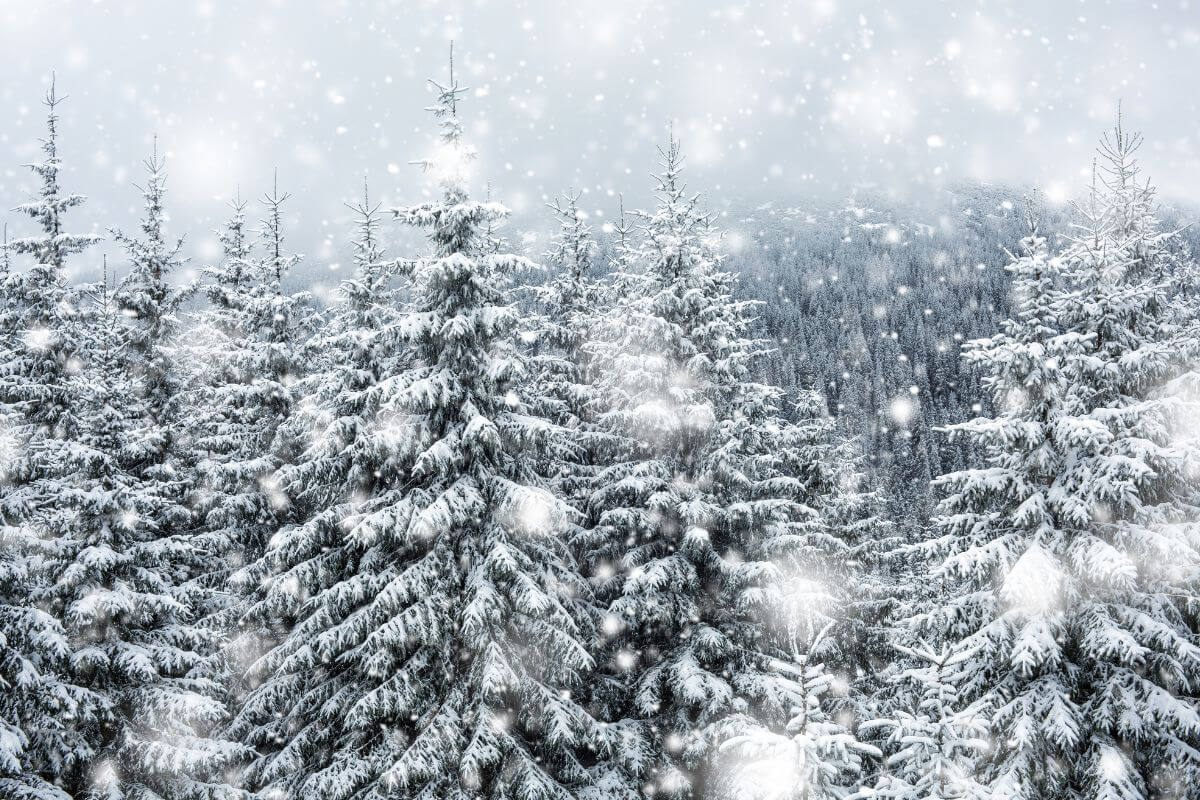
Snow is as much a part of the landscape as the tall mountains when it comes to winter in the Treasure State.
In 2022, Montana averaged a cozy 38.1 inches of snowfall, according to World Population Review. But don’t let that number fool you; some mountainous regions can see over 300 inches in a single season.
The western part of the state tends to be a winter wonderland, with more snowfall than the eastern plains. However, no matter where you are in Montana, you can expect some deep drifts.
The chilly weather is a hallmark of Montana’s winter, and the state’s temperature is often affected by snowstorms. Blizzards are most common in the northeastern part of the state, occurring about 5 times per year.
But if you’re a fan of the white stuff, you’re in for a treat. Montana’s abundant snowfall means plenty of opportunities for winter sports, from skiing and snowboarding to snowshoeing and snowmobiling.
So, if you’re planning a trip to Montana in the winter, be prepared for an abundance of snow and chilly weather, no matter which part of the state you visit.
Read more about Montana and Its Snowfall here.
Montana Winter Wind
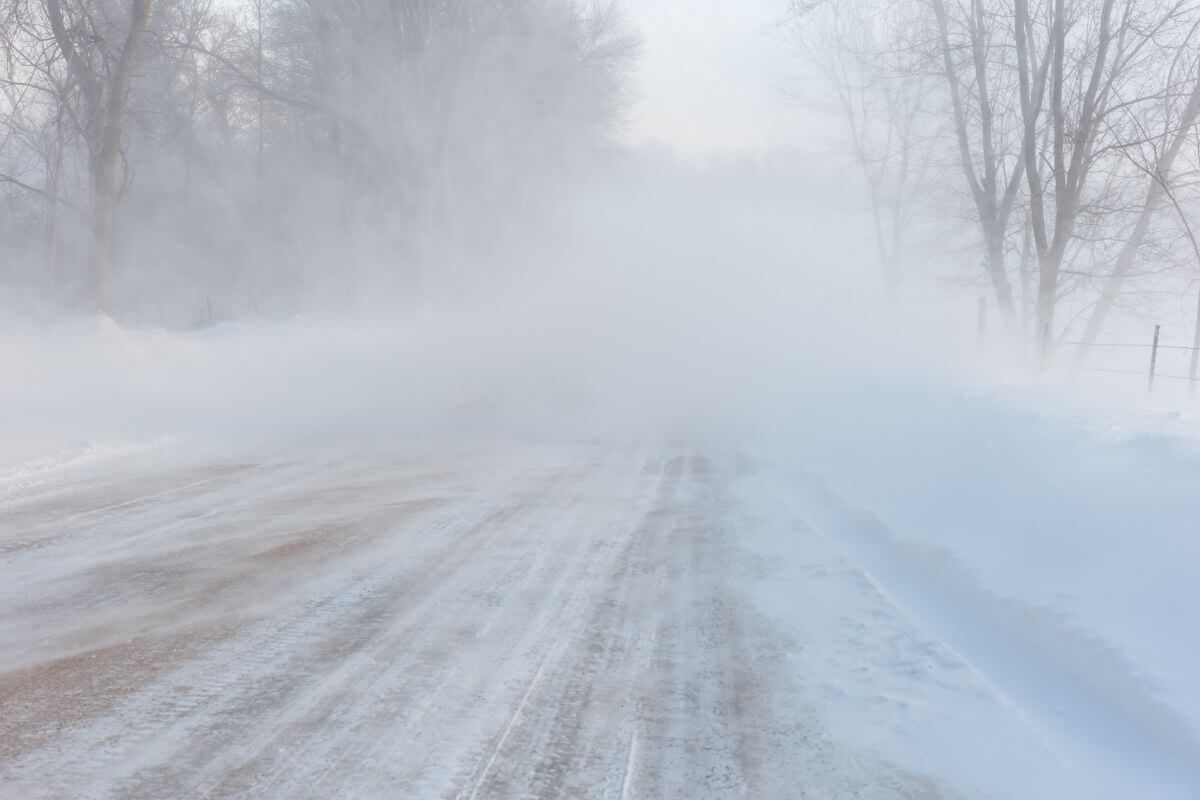
Montana’s winter wind is no joke. Ranked as the fifth windiest state in the U.S., you can expect an average wind speed of over 20 mph.
But here’s an interesting twist: the wind isn’t evenly distributed. Eastern Montana takes the crown for the windiest winter spots, while western Montana enjoys relatively calmer breezes.
Ever heard of Chinook winds? These warm and dry gusts are common along the eastern slopes of the Rocky Mountains. They can be a blessing, bringing sudden temperature spikes during a frigid week. But they can also be a curse, as the rapid temperature changes can cause havoc with roads and infrastructure.
And Montana isn’t an exception for wind chills. Wind chills take into account both the actual temperature and the wind speed, giving you a sense of how cold it is. It’s not just about the temperature; it’s about how it feels.
Wind chills in the state can be bone-chilling. I remember when an Arctic air mass invaded the Northern Rockies; the extreme wind chill would make you feel like you were in the heart of Siberia.
When you visit during the winter months, be prepared, and don’t let the wind deter you from experiencing the magic of Montana’s winter wonderland.
Winter Weather in Montana National Parks
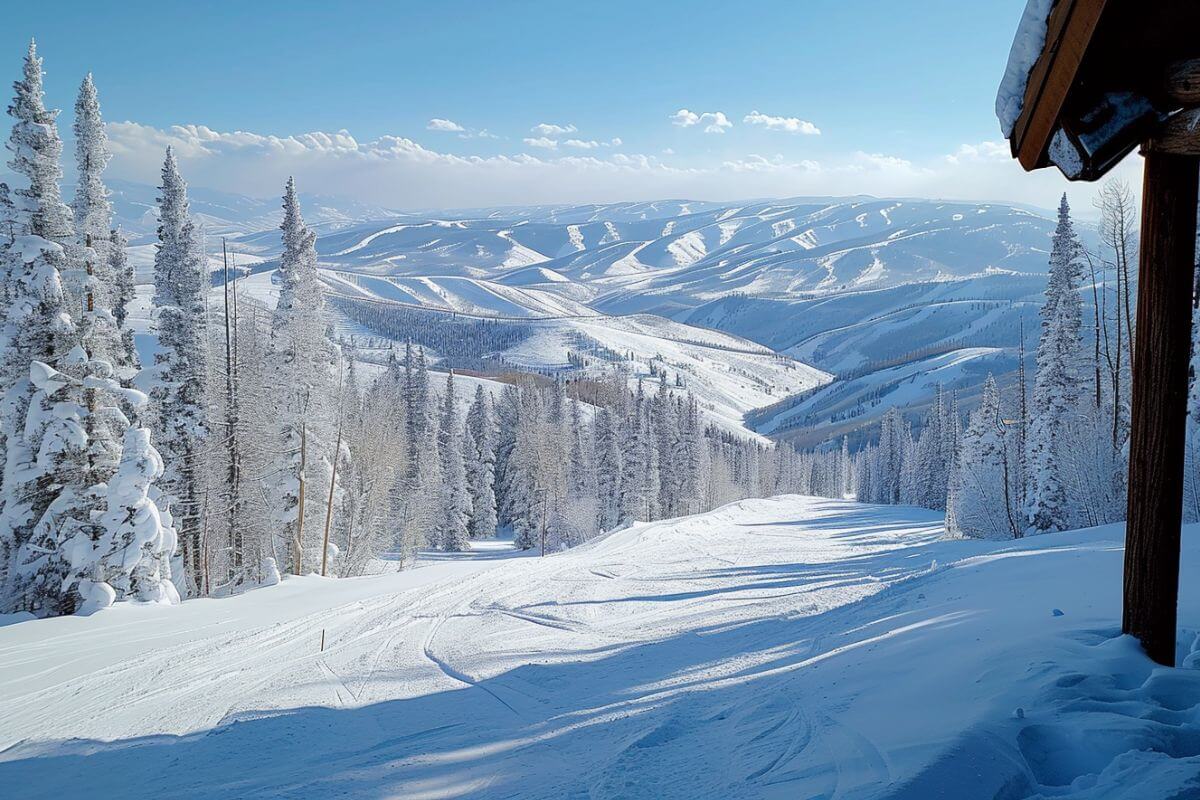
National parks have always been a top destination for tourists, offering stunning landscapes and unforgettable outdoor experiences. When planning a visit, understanding the winter weather pattern is important, especially in Montana.
The state’s national parks, including Glacier and Yellowstone, are known for their breathtaking beauty and diverse wildlife. But as the temperatures drop and snow covers the region, knowing what to expect in terms of weather can make or break a winter adventure.
Winter Weather in Glacier National Park
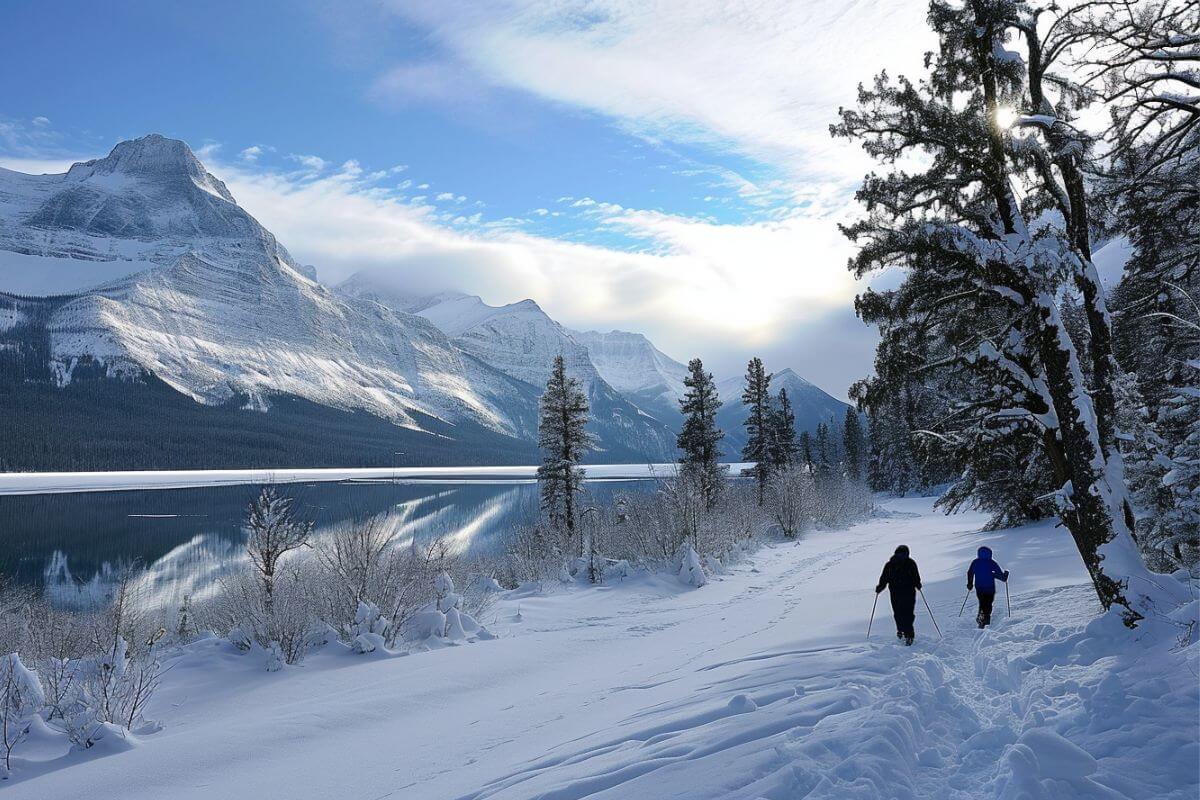
Glacier National Park is a winter paradise that’s as beautiful as it is unpredictable. Here, the weather is a character all its own, and it’s not afraid to make a statement.
Glacier’s weather is a wild card, ranging from serene snowfall to intense blizzards. One day, you could experience a burst of sunshine, with the sun shining brightly on the snow-covered landscape. The next, you might find yourself shrouded in clouds, with flurries of snow dancing in the air.
Most of Glacier National Park is buried under several feet of snow during winter, with the snowfall settling into an impressive 16-foot (4.9 m) average snowpack, transforming the park into a serene and enchanting winter paradise.
The east side of the park, with its higher elevation, can be even more extreme, with frigid temperatures and stronger winds. You can expect temperatures to drop from a chilly 10ºF (-12.2ºC) to 15ºF (-9.4ºC) at higher elevations, like at Logan Pass.
Glacier’s winter weather can be as inviting as it is challenging, so come prepared to embrace the frigid beauty. Just remember, the weather can change on a dime, so flexibility is key. But don’t let that intimidate you; the rewards of witnessing this icy paradise are well worth it.
Winter Weather in Yellowstone National Park
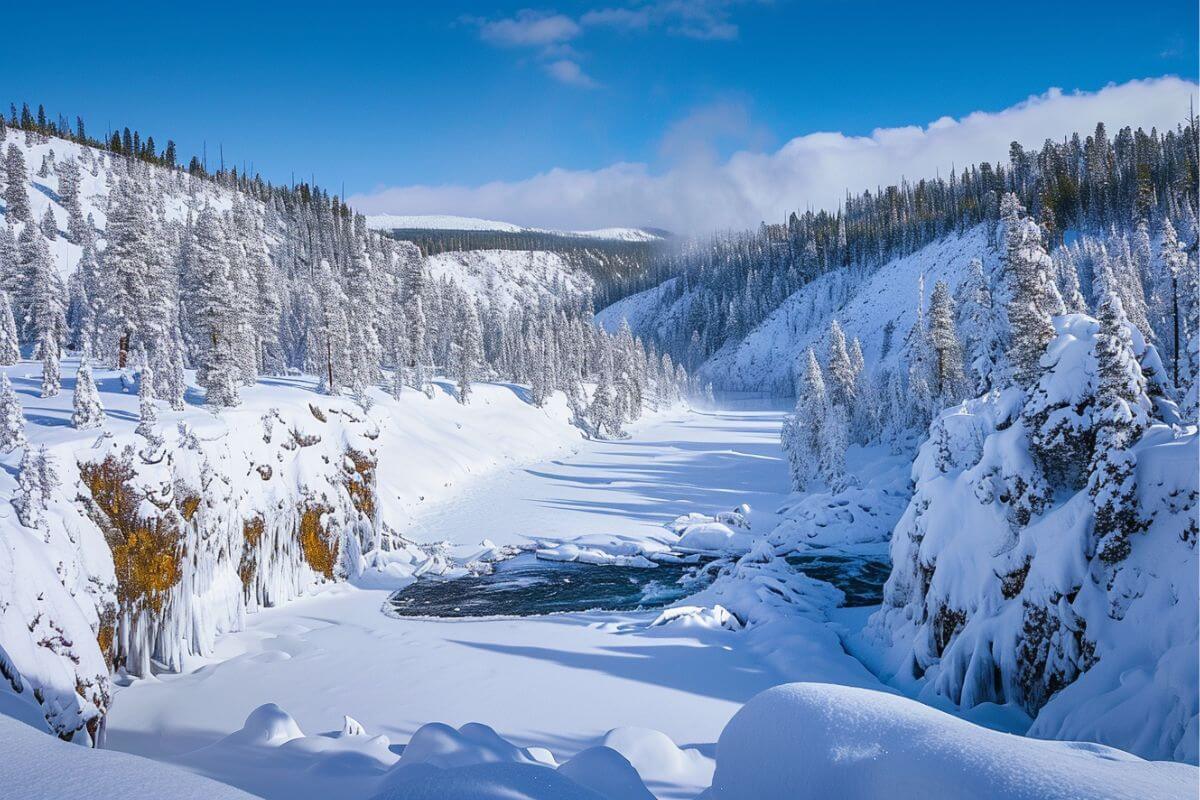
When it comes to winter weather, Yellowstone National Park is a whole different ballgame. I’ve spent some bone-chilling days there, and let me tell you, it’s winter magic like no other.
Here’s what you need to know about Yellowstone National Park before you go in winter:
- Daily Temperature Range – Expect the mercury to hover between 0°F and 20°F (-18°C to -7°C) throughout the day. It’s not just the cold; it’s the biting wind that can make it feel even more frigid.
- Sub-Zero Reality – Nights and higher elevations can easily dip below zero. So, pack those extra layers and a good pair of thermal socks. Trust me, you’ll thank me later.
- Snowfall Surprise – Snowfall is as unpredictable as a roulette wheel. One day, you could be trudging through knee-deep powder; the next day, it’s a winter postcard with fluffy snowflakes. Be prepared for both.
- Slippery When Cold – Those iconic boardwalks near thermal areas? They can be icy and treacherous. I learned this the hard way. Tread carefully and consider using traction devices for your boots.
- Deep Snow Delight – The snow here is a serious matter. So, if you plan on hiking, snowshoeing, or even just strolling, make sure you’re equipped for deep snow.
A winter journey through Yellowstone promises a wild adventure with its burstiness of weather and perplexity of conditions.
Montana Winter Weather Tips
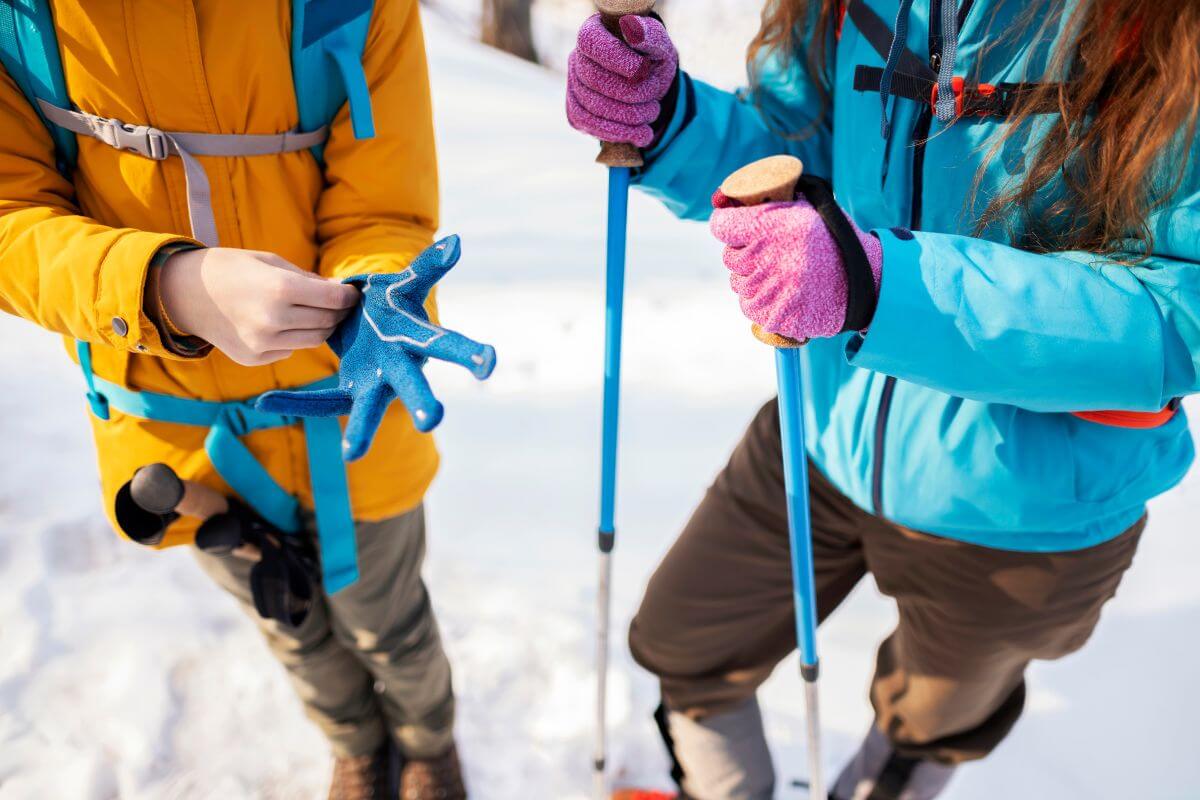
When it comes to winter weather in Montana, preparation is key. Here are some essential tips to keep you safe and comfortable during your winter adventures:
- Tires and Chains – Invest in a good set of winter tires and learn how to put on tire chains. They can be a game-changer when navigating snow-packed roads or icy conditions.
- Ice Scraper – Don’t leave home without a high-quality ice scraper. Clear all the snow off your car before hitting the road for optimal visibility.
- Dress for the Cold Winters – Layer up with warm, moisture-wicking clothing. Think winter boots, wool socks, gloves, hats, snow pants, a heavy jacket, and even hand and foot warmers.
- Stay Upright – Wear traction aids, like ice cleats, when walking on slippery surfaces. They can prevent some embarrassing and potentially dangerous falls.
- Bear Awareness – Yes, bears can still be active during the winter. Carry bear spray, especially when you’re venturing into bear country.
- Hydrate – The combination of high altitude and dry winter air can lead to dehydration. Keep a water bottle handy and drink plenty of water.
- Winter Hazards – Black ice, snow-packed roads, and whiteouts are all common sights during Montana winters. Take it slow and steady on the roads.
- Avalanche Awareness – If you’re a mountain climber or planning to explore high mountain elevations, be aware of the risk of snow avalanches. Be on alert and take necessary precautions.
- Stay Informed – Road reports, weather updates, and winter warnings are your best friends. Frequent snow and wind storms, along with blizzards causing heavy snowfall, can lead to road, trail, and mountain pass closures lasting for several days. Check the National Weather Service or local sources for the latest information.
Montana’s winter season can be both breathtaking and challenging. By following these tips, you can make the most of your snowy exploration while staying safe and prepared. So pack your winter gear, plan your routes, and get ready to embrace the beauty of a Montana winter.
Read more in this Winter Clothing Guide for Montana.
Montana Winter Weather Guide Final Thoughts
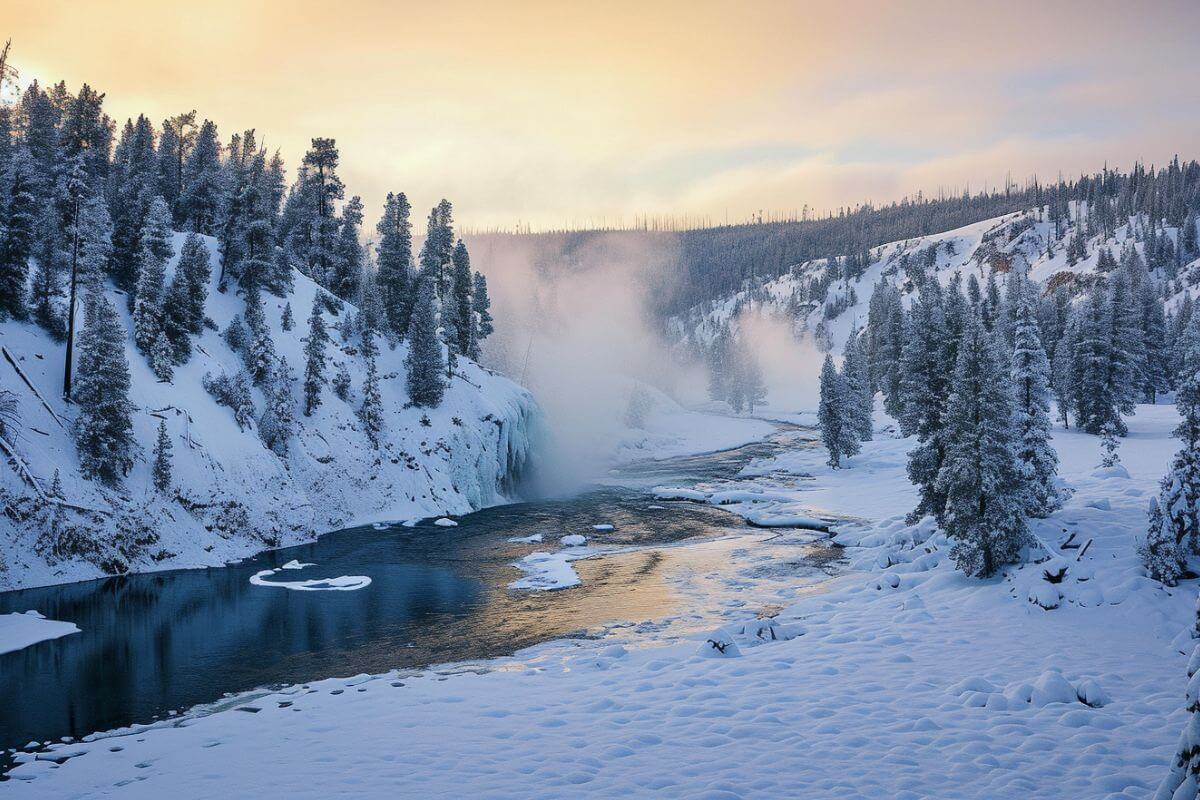
Winter in the Treasure State is a season of beauty, but it’s not without its challenges. From bone-chilling temperatures to deep snow and intense winds, the state’s winter weather demands respect and preparation. But even with the winter hazards, the beauty of the region is undeniable.
While it may be one of the coldest states, Montana is still a go-to place for winter fun. Even Glacier and Yellowstone National Parks are no exception to the extreme colder weather.
Whether you’re exploring national parks or simply navigating snowy highways, following essential winter weather tips in Big Sky Country is crucial.
From packing the right gear to staying informed about road and weather reports, these precautions can make all the difference in ensuring a safe and enjoyable winter adventure.
So, as you plan your Montana winter getaway, remember that the state’s diverse landscapes and ever-changing weather patterns offer a rich tapestry of experiences.
Embrace the beauty, but do so with caution and respect for the elements. Big Sky Country’s winter is a journey best enjoyed when you’re prepared to face its challenges and revel in its wonders.
Winter Weather in Montana FAQs
1. Is Montana the Coldest State?
Alaska, with its icy reputation, holds the title of the coldest state. Yet, Montana is still one of the coldest states in the U.S. and has plenty to offer for those brave enough to face the chill.
2. What Is the Coldest Part of Montana?
When it comes to Montana, the chilliest temperatures tend to settle in the higher elevations and mountainous regions. Especially during the winter months, the mercury can plummet to some seriously frigid levels.
3. What Is the Coldest Month in Montana?
January takes the cake as the coldest and iciest month in Montana. The snow blankets the state, creating a winter wonderland that’s both breathtaking and bone-chilling.
4. Is Montana Beautiful in Winter?
Montana is exceptionally beautiful in winter. The snow-covered landscapes create picturesque scenes that are perfect for skiing and snowmobiling. The crisp, fresh air and the stunning views make it a must-visit destination for winter sports enthusiasts.
5. Does Montana Have Hard Winters?
Montana is known for having harsh winters characterized by cold temperatures, heavy snowfall, and icy conditions, particularly in the mountainous regions.
January 20th, 1954 holds the record for the coldest date in Montana history, with the temperature plummeting to a bone-chilling -70°F (-56.7°C) at Rogers Pass.
Uncover more interesting facts about Montana below:

